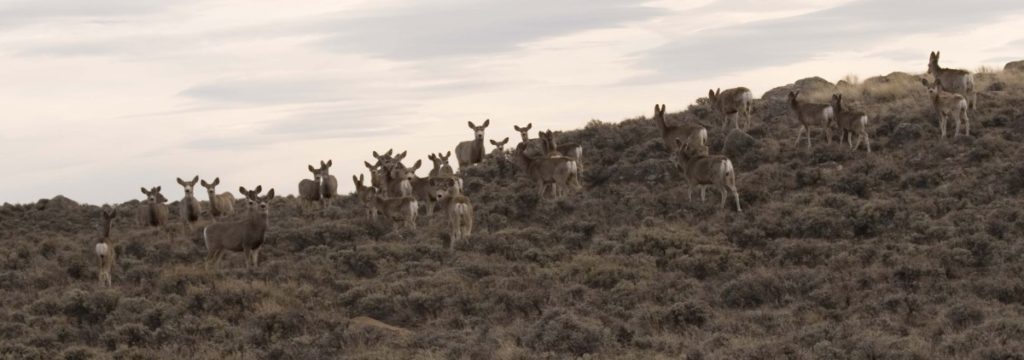Chronic Wasting Disease (CWD) is a mysterious and mindless killer that isn’t even alive, but it warps the very fabric of the brain. No, it’s not the latest horror movie trailer, it’s a prion. What is a prion? It’s a malformed protein that, when it touches other proteins, causes them to unfold and refold in the same twisted way.
Prions result in the death of nerve cells and are the probable cause of a group of diseases called transmissible spongiform encephalopathies (TSEs). In layman terms, that’s a disease that makes a brain into swiss cheese and can be passed between animals. TSEs include bovine spongiform encephalopathy (BSE, mad cow disease), scrapie in sheep, chronic wasting disease (CWD) in deer species, and Creutzfeldt-Jakob (pronounced crudes-felt ya-kob) disease in humans.
Of special concern in Wyoming is CWD and its implications for hunters and wildlife populations. All the evidence points to CWD as relatively new in North America, with the oldest known case discovered in 1967. It has become more widespread and more prevalent with 30-40% of adult males testing positive in some herds where it has been the longest.
There are no instances where CWD was discovered in a population and then spontaneously went away. CWD has observable negative effects on the size of the population in the highest prevalence herds. There is currently no way to stop the disease, but it is possible to slow the spread by limiting the movement of infected animals or animal parts from areas with the disease to areas without.

So, other than the effects of this disease on wildlife populations, why is CWD a big deal?
There are concerns that eating CWD-positive meat could result in Creutzfeldt-Jakob disease. There are several hundred cases of Creutzfeldt-Jakob disease every year, but the vast majority are spontaneous (a protein just misfolded on its own). A small proportion are variant Creutzfeldt-Jakob and may be related to exposure to TSEs from other species. There have been connections between eating meat from cows infected with BSE and cases of variant Creutzfeldt-Jakob, most notably 175 cases in the UK after a BSE outbreak.
A new preliminary finding suggests that there may be a risk of transmission between CWD infected deer and primates. To date, there are no known cases of Creutzfeldt-Jakob linked to consumption of CWD-positive animals. That is not to say it’s not possible. The hypothetical odds of transmission vary widely depending on the study, but they are likely not zero.
What can you do?
If you are a hunter, and you are concerned about CWD, consider getting your deer or elk tested for CWD. If it’s positive, be on the safe side and take the advice of the World Health Organization and the Centers for Disease Control: do not consume (or feed to domestic animals) any products from animals that test positive for TSEs. Also, help prevent the spread of this disease by following carcass transport guidelines, disposing of positive animals in an approved landfill, and report sick animals to the Wyoming Game and Fish Department.
Additionally, hunters can show their support for the Wyoming Game and Fish Department’s Chronic Wasting Disease Management Plan. Within this plan are science-based management tools to reduce the prevalence and slow spread of CWD. These tools include getting rid of artificially high areas of concentrations of populations and reducing older age-class buck populations, deer twice as likely to be carriers, where appropriate.
